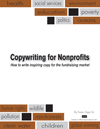In the for-profit marketplace “lead nurturing” receives a lot of attention. It requires skill. That’s because a lead can result in a sale. A lead correctly nurtured generates revenue.
This is analogous to nonprofits nurturing prospective donors to a charity, or members to an association. Each donor and member results in revenue.
LeadSloth by Jep Castelein has a blog post titled, “Finding Untapped Revenue in Your Marketing Database.” Castelein says, “With a solid nurturing strategy you’ll find new sales opportunities from leads who you thought were not interested.”
Translated for nonprofits, Castelein’s wisdom means that . . . with a solid nurturing strategy, you’ll find new prospects you thought weren’t interested that become donors and/or members. There are “untapped opportunities in your database.”
Castelein goes on to say there are six steps to uncover those untapped opportunities. I’ve transformed his six steps into verbiage applicable to charities and associations, plus I added my thoughts on what it means to you:
1 – Choose The Right Audience . . . 100% of the population is not interested in your nonprofit and will not support it regardless of what you do. Stop trying to appeal to such a broad market. If you want to attract more people, appeal to just a few.
2 – Know All About Your Audience . . . conduct more research into why people support you; surveys online and by anyone who answers the phone; talk to them at special events; study what they respond to and record all this in your database.
3 – Create Content That Your Audience Needs . . . and that they VALUE. This also includes donor-centric and member-centric copy. It’s all about them and NOT you. Cultivate your prospective donors and members.
4 – Make Offers They Can’t Refuse . . . how you ask for a donation is an offer. How you invite someone to join your association or renew their membership is an offer. Is it a great offer from THEIR perspective? Is it CLEAR? Is it compelling?
5 – Have Conversations . . . ask for their opinion; invite comments on a blog; engage them in social media; talk to them on the phone; and do all this without always asking for a donation or for anything besides their thoughts!
6 – Collaborate With Your Communication Team . . . breakdown the silos. Development staff works with marketing and communications. Online staff works with offline staff. Exchange ideas. What’s working for each of you and what isn’t? How can that knowledge be leveraged? Without integration at all levels, you’re hurting your bottom line. You’re losing prospects.
Lead nurturing is just as important within the nonprofit industry as it is in the for-profit marketplace. Do this well if you want to acquire more donors and members. You’ll generate more revenue for you nonprofit as you simultaneously give supporters what they want.
Related posts:
Customer reviews … Donor reviews
Nonprofits lead for-profits in mobile
